Average drivers of cars are content with getting from point A to point B in one piece. Other drivers – those who chase the adrenaline rush or have a death wish – want to go faster. It’s why racing has been a thing for years and why certain car companies spend tons of money to get a little more speed out of their vehicles.
One field these car companies invest in is aerodynamics – or how things move through the air. By adjusting the shape and orientation of certain parts, you can get a faster car.

The same principle works on toy cars, albeit on a smaller scale. James Whomsley of ProjectAir created a couple of makeshift aero devices and attached them to his RC car in an attempt to make it go faster. Before doing that, he had to first see just how well his car would perform without anything attached to it.
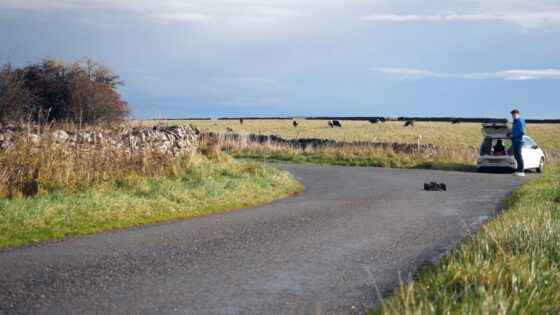
His barebones chassis turned a street corner ten times with an average time of 3.91 seconds. While this may seem fast, the car struggled to make turns and stay on the track due to a lack of aerodynamic grip. This means that almost no air pressure helped keep the car down while turning the corner.
James began working on his aero devices with a base test to work off on.
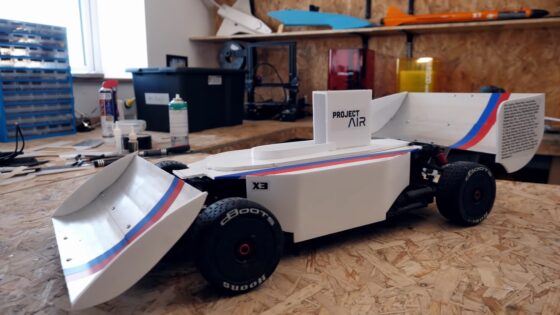
James created a cover for the chassis and side panels for the wings using foam board panels. He placed two giant wings on the car – one in the front and another in the back. The wings and their supports were made of sturdy aluminum to push large amounts of air pressure upwards – thereby keeping the RC car down on the track.
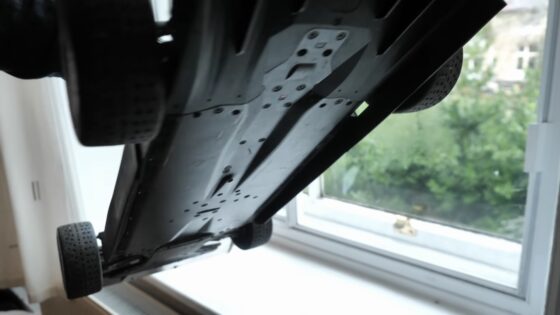
Going back to the track with his first prototype, James found that his modifications resulted in a faster run time of 3.21 seconds, but the front wing’s massive size wasn’t allowing any air to pass to the rear wing.
To compensate for this, he created another front wing roughly half the size of the first one. He also glued on some skirts on the bottom sides of the RC car. These would make a vacuum that would confine the air beneath the vehicle, causing the chassis to stay more rooted to the road. James also lifted up the car’s rear, hopefully allowing better airflow from the front to the back.
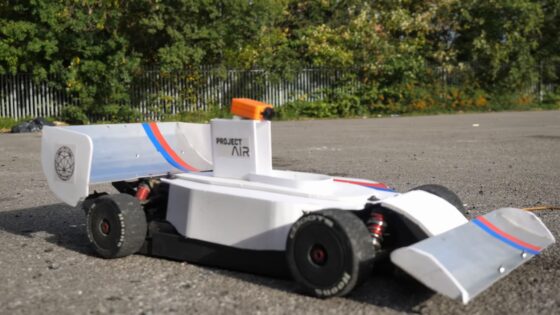
Instead of going back to the same street corner a third time, James thought it would be better to bring his second prototype to a more open space to test its high-speed capabilities.
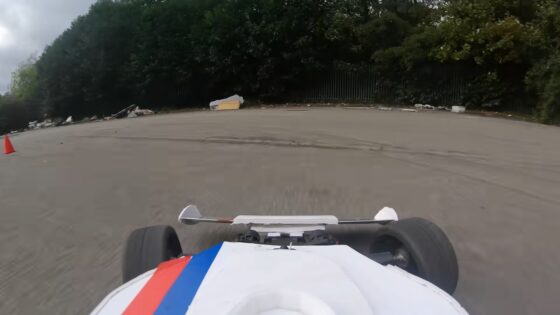
While the modifications seemed to work initially, the onboard camera showed that the front tires were scrubbing. That means that even though the wheels were angled, the car itself wasn’t turning as fast as it should have been. In layman’s terms, the RC car was understeering.
James saw the under-steering resulting from the smaller front wing upon closer inspection. With more air pushing on the rear wing, it could act as an elevator to lift the car’s back upwards.
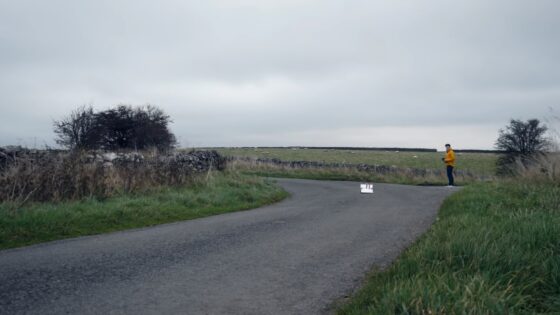
His third and final design merged elements from his two prototypes. The RC car would retain the skirts and elevated rear of the second design but have the much bigger front shovel wing of the first design.
It only seemed fitting that James returned to the street corner where he began his tests for his final experiment. After a few runs, the front wing met its inevitable end at the hands of terra firma. Before it ate dirt, however, the RC car had managed a run time of 2.29 seconds – much faster than the 3.91 seconds of the barebones car and slightly faster than the prototype without any skirts.

In a post-mortem examination, James found out that the wings were bending while the car was in motion. That was clear evidence that they were doing their job of pushing the air upwards.
James mentioned that he didn’t consider the weight of the RC car. Considering his car weighed a beefy 6 kg, downward air force might not have as significant an impact as it would have on a smaller, lighter car.
The experiments proved that aerodynamics plays a significant role in making cars faster, even with the said inconsistencies. Hopefully, James will work on a lighter car with more controlled variables in a future video. To stay up to date on that, be sure to check out his YouTube channel, ProjectAir.

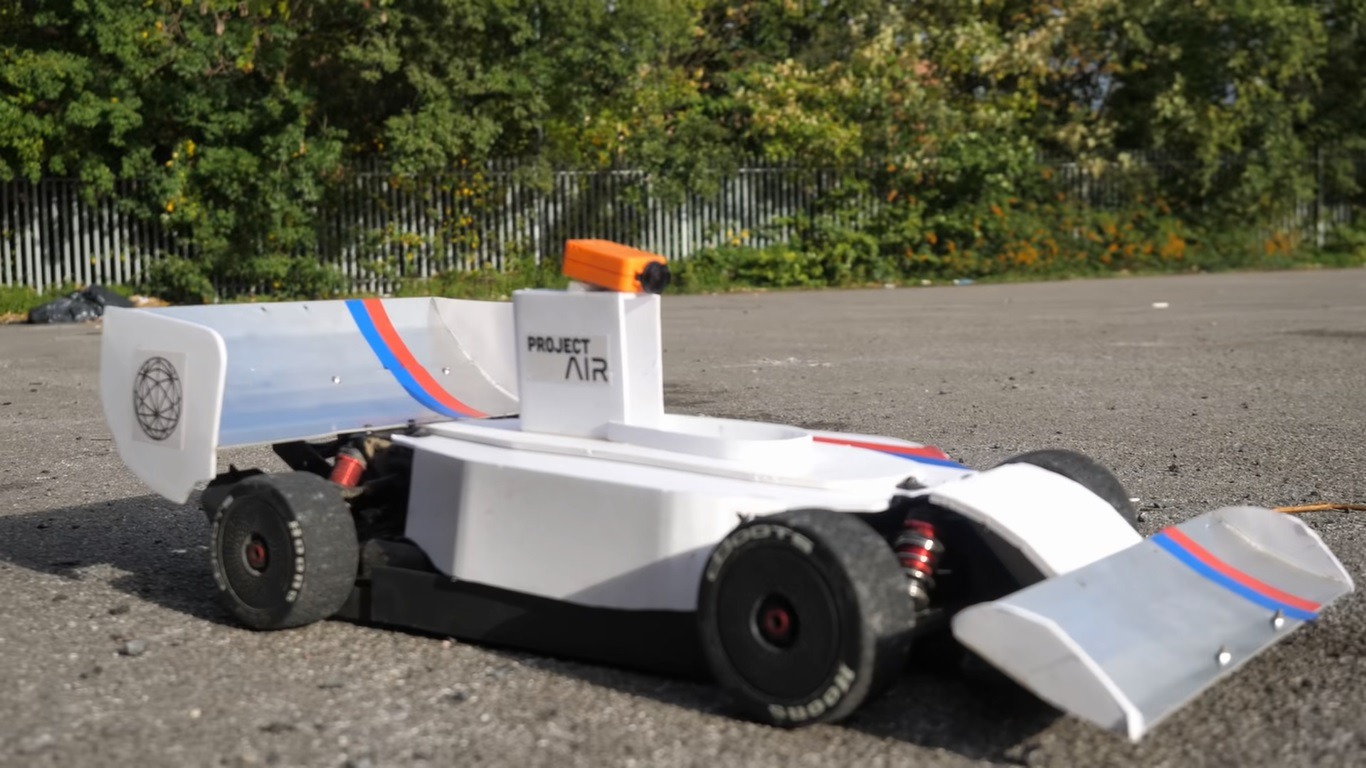


![6 Types of Civil Engineering Drawings [Detailed Guide]](https://www.solidsmack.com/wp-content/uploads/2023/12/Civil-Engineering-Drawings-270x180.jpeg)

